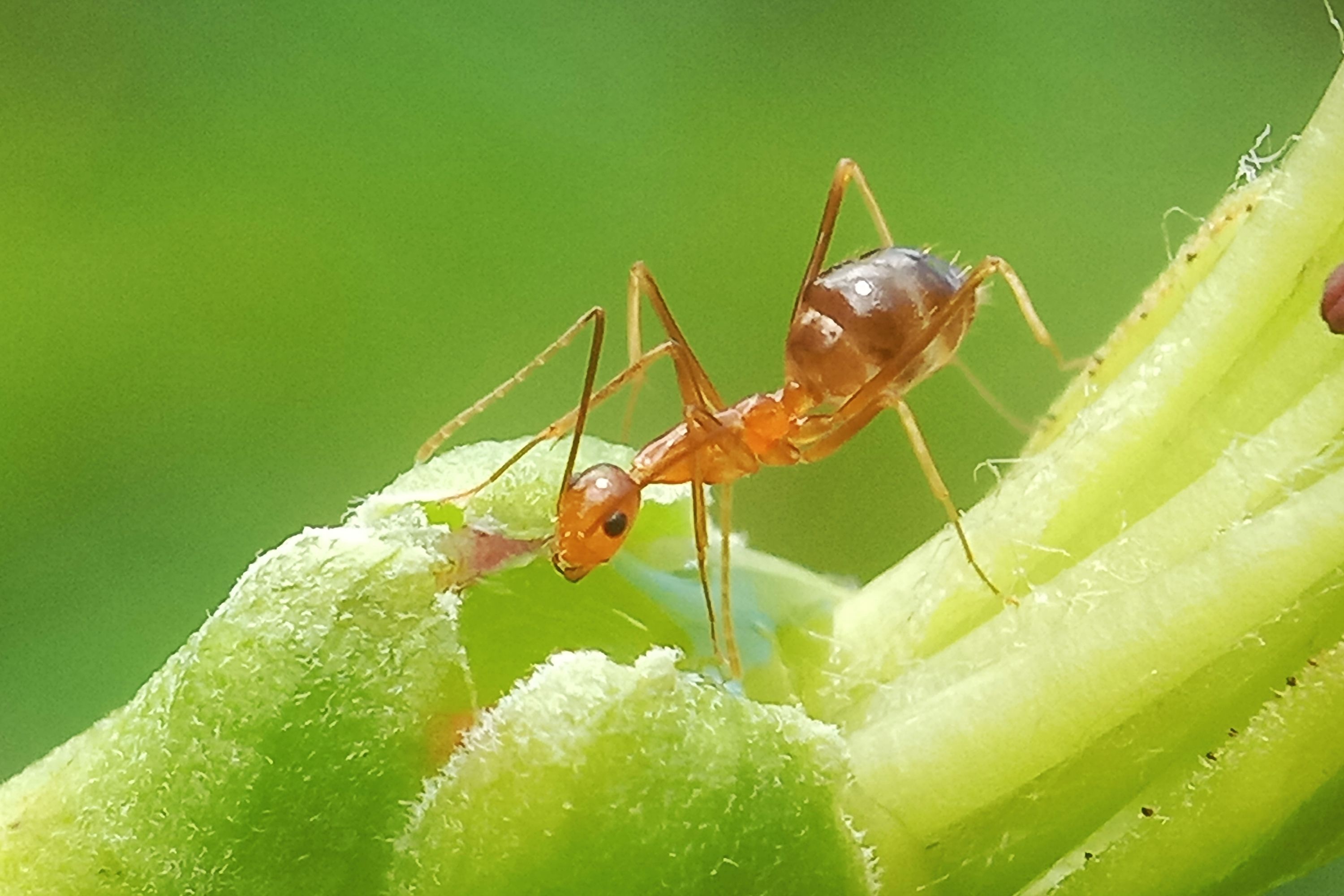Thief ant
(Solenopsis carolinensis)

Description
Solenopsis carolinensis, the thief ant, is a species of ant in the family Formicidae. Fire ants are several species of ants in the genus Solenopsis, which includes over 200 species. Solenopsis are stinging ants, and most of their common names reflect this, for example, ginger ants and tropical fire ants. Many of the names shared by this genus are often used interchangeably to refer to other species of ant, such as the term red ant, mostly because of their similar coloration despite not being in the genus Solenopsis. Both Myrmica rubra and Pogonomyrmex barbatus are common examples of non-Solenopsis ants being termed red ants. None of these names apply in all countries nor to all species of Solenopsis, nor only to Solenopsis species; for example the colloquial names for several species of weaver ants in the genus Oecophylla in Southeast Asia include "fire ants" because of their similar coloration and painful bites; the two genera, however, are not closely related. Wasmannia auropunctata is another unrelated ant commonly called the "little fire ant" due to its potent sting. The bodies of mature fire ants, like the bodies of all typical mature insects, are divided into three sections: the head, the thorax, and the abdomen, with three pairs of legs and a pair of antennae. Fire ants of those species invasive in the United States can be distinguished from other ants locally present by their copper brown head and thorax with a darker abdomen. The worker ants are blackish to reddish and their size varies from 2 to 6 mm (0.079 to 0.236 in). In an established nest these different sizes of ants are all present at the same time. Solenopsis spp. ants can be identified by three body features a pedicel with two nodes, an unarmed propodeum, and antennae with 10 segments plus a two-segmented club. Many ants bite, and formicine ants can cause irritation by spraying formic acid; myrmecine ants like fire ants have a dedicated venom-injecting sting, which injects an alkaloid venom, as well as mandibles for biting. A typical fire ant colony produces large mounds in open areas, and feeds mostly on young plants, insects and seeds. Fire ants often attack small animals such as small lizards and can kill them. Unlike many other ants, which bite and then spray acid on the wound, fire ants bite only to get a grip and then sting (from the abdomen) and inject a toxic alkaloid venom called solenopsin, a compound from the class of piperidines.
Taxonomic tree:







